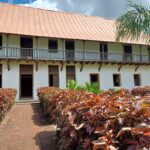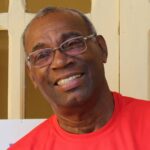Festival de la Trova in Santiago de Cuba
The Pepe Sánchez Festival de la Trova is celebrated every year in Santiago de Cuba from 15-20 March 15th till March 20th. José ¨Pepe¨ Sánchez, recognised as the father of troubadour song in Cuba, was born on 19th March 1856 and this is the reason that the festival has his name. It is also the reason why the Day of the Cuban Troubador is celebrated on March 19th each year. Pepe Sánchez was a tailor and then started in business as co-owner of a copper mine and with no formal training in music he became famous as a talented musician, composer and singer.
Trova is one of the oldest expressions of Cuban music in which singers use only their voice and a guitar to express themselves, often singing about sentimental themes and traditional popular culture. It originated in the latter half of the 19th century. Nueva Trova is a new musical style that emerged in the late sixties after the triumph of the Cuban revolution in 1959. It has its roots in the traditional trova, but its content was based on the political and social changes that the Cuban revolution brought to society.
Since the early 1960s, the Pepe Sánchez Festival de la Trova has been held in Santiago de Cuba and serves to reaffirm Cuban cultural identity through trova song. The event brings together different generations of musicians who cultivate the Trova tradition, both original and new. It is the oldest festival celebrated in Cuba and many important international personalities have participated as well as Cuban ones.
In 2023, the event will be celebrated from 16-20 March and is celebrating its 60th anniversary. Eduardo Sosa Laurencio, the current festival president, is himself a well known Cuban trova musician and was born near Santiago de Cuba in 1972. He attracted public attention with his compositions in a uniquely Cuban style. He has shared stages with important musicians like Silvio Rodríguez, Pablo Milanés, Compay Segundo, Carlos Varela and Ana Belén and is the singer-songwriter of songs such as “Retoño del Monte”, “A mi me gusta”, “Tan llena de tristeza”, “Era miel” and “Pajarito y bandolero”, just some of his songs which keep the Trova genre alive. Due to his extensive artistic career and undoubted passion for his art he has become one of the best loved exponents of Trova in Cuba.
Live music concerts take place during the festival in venues such as the famous Casa de la Trova, Casa Dranguet and the Terraza Matamoros. There are also lectures and workshops dedicated to the Trova genre and its development over the years.
One of the most important activities is the visit to the graves of important Trova performers who are no longer with us such as Pepe Sánchez himself, Miguel Matamoros, Sindo Garay, Pepe Bandera, Compay Segundo (of Buena Vista Social Club fame), Eulalio Limonta and Enrique González (La Pulga), among others. These important people are commemorated with flowers, poems and songs that remind us their artistic legacy.
Trova may be rooted in tradition but it is very much alive in Cuban culture.







